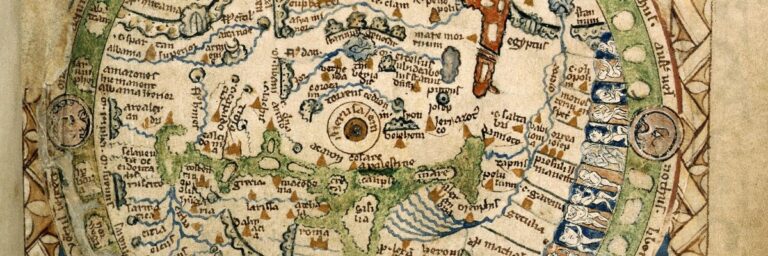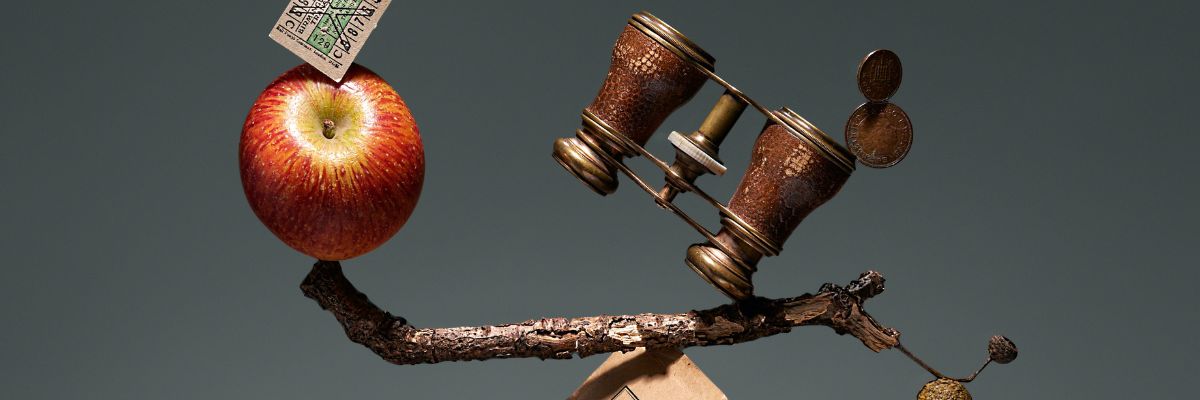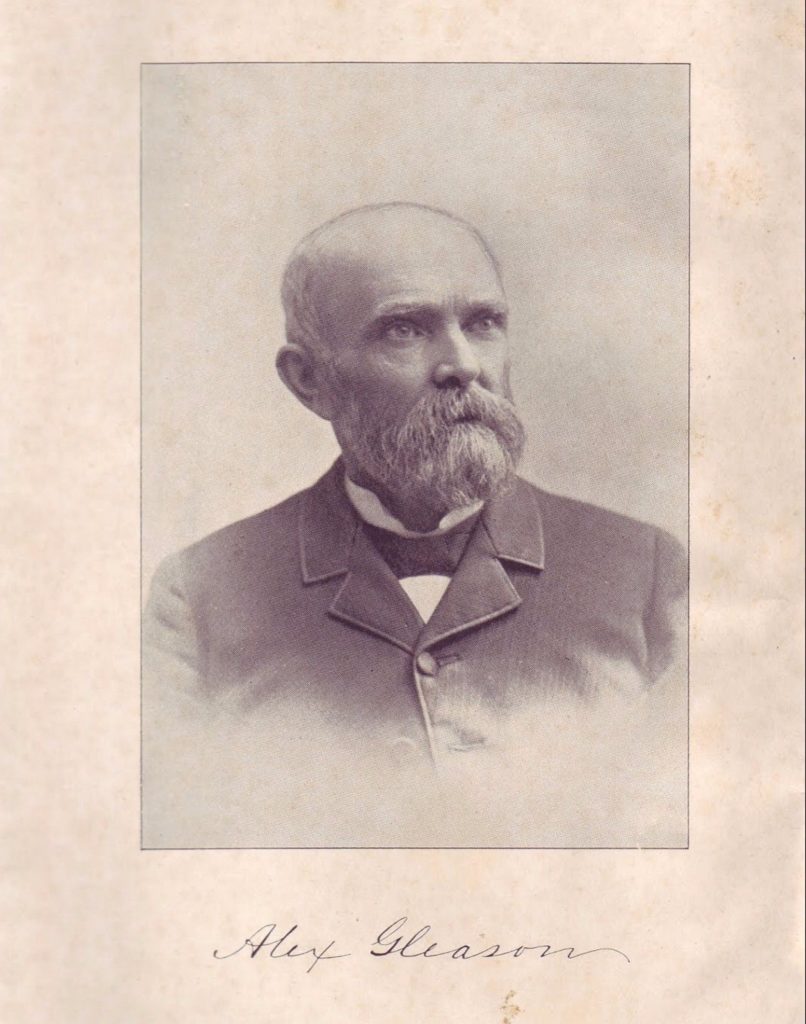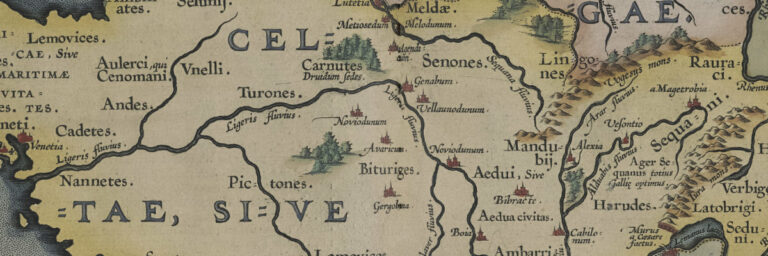
The Psalter World Map of the 13th Century: Unveiling mysteries of the medieval world.
The Psalter World Map, a medieval marvel, intertwines art, faith, and geography, offering a unique window into the medieval worldview.

An extract from Alexander Gleason’s Book – Is the Bible from Heaven? Is the Earth a Globe?
In the following extract from his 1893 publication, Alexander Gleason looks at Isaac Newton, and his struggles with the scientific hypothesis around heliocentric theory.
The creator of Natural Philosophy was born at Woolsthorpe, in Lincolnshire, December 25, 1642, and at his birth was so small and weak that his life was despaired of. On the death of his father, which took place While he was yet an infant, the manor of Woolsthorpe became his heritage. His mother sent him, at an early age, to the village school, and in his twelfth year to the town of Grantham. While here he displayed a decided taste for philosophical and mechanical inventions, and, avoiding the society of other children, provided himself with a collection of saws, hammers, and other instruments with which he constructed models of many kinds of machinery. Some knowledge of drawing being necessary in these operations, he applied himself, without a master, to the study. The walls of his room were covered with all sorts of designs.
After a short period, however, his mother took him home for the purpose of employing him on the farm and the affairs of the house, and sent him several times to the market at Grantham with the produce of the farm. A trusty servant was sent with him, and the young philosopher left him to manage the business, while he himself employed his time in reading. A sun dial which he constructed on the wall of the house at Woolsthorpe is still shown. The irresistible passion for study and science finally induced his mother to send him back to Grantham, where he remained till his eighteenth year, when he was entered at Trinity College, Cambridge, in 1660.
Newton had the good fortune to find the celebrated Doctor Barrow, professor of mathematics. In order to prepare himself for the lectures Newton read the text-books in advance; these were Sanderson’s Logic and Kepler’s Treatise on Optics; the Grome of Descartes was also one of the first books that he read at Cambridge. He next proceeded, at the age of about twenty-one, to study the works of Wallis, and appears to have been practically delighted with the celebrated treatise of that author entitled, “Arithmetic a Infinitorum.” The matter that Newton deduced from these authors is too complicated and foreign from our points which we wish to show to here enumerate them, but will refer the reader to any good encyclopedia for details.
We shall give a few paragraphs to show the character of the man and the foundation of the system upon which modern astronomers build their theoretical castles.
“About 1665, being about to quit Cambridge on account of the plague, he retired to Woolsthorpe and now turned his attention more closely to subjects of natural philosophy. As he was one day sitting under an apple-tree the fall of an apple led him to reflect on the nature of that remarkable principle which urges all bodies toward the center of the earth. ‘Why? he asked himself, ‘may not this power extend to the moon? And, if so, what more would be necessary to keep her in her orbit about the earth ? ’ He considered that if the moon was retained about the earth by terrestrial gravity, the planets which move around the sun ought similarly to be retained in their orbits by their gravity towards that body. Setting out with the law of Kepler [see fore part of this chapter], that the squares of the times of revolution of the different planets are proportional to the cubes of their distances from the sun, Newton [supposed that he had] found by calculation that the force of solar gravity decreases proportionally to the squares of the distances; and having thus determined the law of gravity of the planets toward the sun, he endeavored to apply it to the moon – that is, to determine the velocity of her motion round the earth by means of her distance, as settled by astronomers, and of the intensity of gravity as shown by the fall of bodies to the earth’s surface. To make this calculation it is necessary to know the exact distance from the surface to the center of the earth, expressed in parts of the same measure that is used in marking the spaces described in a given time by falling bodies at the earth’s surface, for their velocity is the first term of comparison that determines the intensity at this distance from the center, which we apply afterwards at the moon’s distance. It then remains only to be seen if gravity, when thus diminished, has precisely the degree of energy necessary to counteract the centrifugal force of the moon supposed to be caused by her observed motion in her orbit. Unfortunately at that time there existed no correct measure of the earth’s dimensions. Newton was obliged to employ the imperfect measures then in use, and found that they gave for the force which retains the moon in her orbit a value greater by one sixth than that which results from her observed circular velocity. This difference seemed, to his cautious mind, a strong proof against his bold conjecture. He imagined that some unknown cause modified, in the case of the moon, the general law of supposed gravity indicated by the motion of the planets… In 1666 he returned to Cambridge, was chosen Fellow of his college (Trinity) in 1667, and the next year was admitted A. M.; but he did not disclose his secrets even to his instructor, Dr. Barrow. In 1668, however, Mercator published his “Logarithmic Technia,” in which he had obtained the area of the hyperbola, referred to its asymptotes by expanding its ordinate into an infinite series, which was the main secret of Newton’s method.
“In the course of 1666, his attention had been accidentally drawn to the phenomena of the refraction of light through prisms. His experiments led him to conclude that light, as it emanates from the radiating bodies, is not a simple and homogeneous substance, but that it is composed of a number of rays endowed with equal refrangibility and possessing different coloring properties. In 1669, being appointed professor of mathematics, preparing to lecture upon optics, he endeavored to mature his first results, and composed a complete treatise in which the fundamental properties of light were unfolded, established and arranged by means of experiments alone without any mixture of hypothesis, a novelty at that time almost as surprising as these properties themselves. Thus it appears that three great discoveries which form the glory of his life, – his method of fluxions, his theory of Universal Gravitation and the Decomposition of Light, were conceived before his twenty-fourth year. In vain did he declare that he neither advanced nor admitted any hypothesis whatsoever, and that his sole object was to establish and connect facts by means of the laws of nature. This severe and abstract method of reasoning was little understood, and it is hardly conceivable into what minuteness of detail he was obliged to enter. So much was he disgusted with these difficulties that he gave up the intention of printing his lectures on optics with his treatise on series. Before quitting the list, however, he addressed another paper (1675) to the Royal Society, completing the account of his results and his views on the nature of light. This treatise, united with his first paper on the analysis of light, afterwards served as the base of the great work, Treatise on Optics, (1704) in which, however, the experimental investigation of the phenomena is more extensive and more strictly separated from hypothesis.
“In his paper of 1675, after excusing himself for proposing a conjecture as to the nature of light, and declaiming that it had no connection with the facts which he had discovered, he goes on to give one which he should be inclined to consider most probable i f be were obliged to adopt any. In his letter he proposed as matter deserving attention, to verify the motion of the earth by direct experiment, viz., by letting bodies fall from considerable height and observing if they follow exactly a vertical direction; for if the earth turns, since the rotary velocity at the point of departure must be greater than at the foot of the vertical, they will be found to deviate from this line towards the east instead of following it exactly as they would do if the earth did not move. This demonstration, however, failed to prove anything in favor of the earth’s motion.
“He would sometimes rise, and suddenly by some conception, would sit on his bedside for hours together, and would forget his meals, unless reminded of the necessity of taking some nourishment. It was not until 1686 that he finally concluded to present his work to the society, at the expense of which it was printed in 1687. Not more than two or three of his contemporaries were capable of understanding it, and more than fifty years elapsed before the great physical [supposed] truth which it contained was thoroughly understood by the generality of scientific men. In 1687 Newton was one of the delegates sent by the University to maintain its rights before the High Commission Court when they were attacked by James II. and in 1688, was elected by the University to the Convention Parliament, but never distinguished himself in that body.
“One morning, 1692, he had accidentally shut up his little pet dog Dimond in his room, and on returning found that the “animal by upsetting a candle on his desk had destroyed the labors of several years. On perceiving his loss he only exclaimed, ‘Oh, Dimond! Dimond! you little know the mischief you have done.’ But the grief caused by this circumstance injured his health, and M. Biot shows that it impaired his understanding. This fact of a derangement of his intellect, according to Biot, explains why Newton, though only forty-five years old when the Principia was published, never after gave to the world a new work in any branch of science, and merely published some which had been composed.
“In 1723 Newton made an attempt to show the fulfillment of the Prophecies of Holy Writ. In his historical account of two notable Corruptions of the Scriptures, he discusses the two passages in the Epistle of St. John and St. Paul, relating to the Trinity, which he supposes to have been altered by copyists. At this period of his life the reading of religious works, with the conversation of his friends, formed almost his only amusement, after performing the duties of his office. He had almost ceased to think of science; and during the last ten years of his life, when consulted about any passage in his works, he would reply, ‘Ask Mr. DeMoivre; he knows better than I do.’ When his friends expressed their admiration of his discoveries, he said, ‘To myself I seem to have been as a child playing on the sea-shore, while the immense ocean of truth lay unexplored before me.’ His countenance was rather calm than expressive; his manner languid, though his health good until his eightieth year, when he suffered from a calculous disorder, which occasioned his death, March 20, 1727.’’ Encyclopedia Americana.
Says Dr. Brewster in regard to Newton’s writings: “The great mass of Newton’s papers came into the possession of the Portsmouth family through his niece, Lady Lymington, and I have been safely preserved by that noble family. There is reason to believe that they contain nothing which could be particularly interesting to science,. but as the correspondence of Newton with the contemporary philosophers must throw considerable light on his personal history, we trust that it will ere long be given to the public… Brewster’s Life of Newton.
The following lines were taken from an English Magazine, Earth:
Sir Isaac sat under his apple tree,
Quaffing his good old wine,
He eyed his decanter right merrily;
And lauded the fruit of the vine.
“Ho! bring me another full bottle,” he cried,
“And carry the ,empties’ away;
“For wine aids reflection when fitly applied,
“And I would be pensive to-day.”
He drank and he studied, he studied and drank,
Until he could study no more I
Then into a slumber he quietly sank.
And varied his thoughts with a snore”
But a breeze shook the tree under which he reclined,
And, alas! broke the good man’s repose.
For an apple dislodged by the troublesome wind –
Struck him full on the bridge of the nose.
Then up started Isaac, his face all aglow
At the insult he thought he’d received,
And quickly looked round for his impudent foe,
But in vain as may well be believed
He searched in the garden, he searched in the house.
He searched in the neighboring lanes;
Declared if he found him he’d certainly douse
The rogue in the pond for his pains.
But useless his search, he returned and sat down;
Another full bottle was brought;
But still on his face sat a terrible frown.
As the key to the mystery he sought.
The wind blew more fierce and ripe apples fell
In multitudes thickly around;
Till another one lodged on his organ of smell,
Bebounded and rolled on the ground.
“Eureka,” he cried, “I’ve discovered the cause,
“And value the pain not a straw,
“Since ’tis so, ‘twill teach me in future to pause,
“Ere hasty conclusions I draw.”
He pondered long time, and he drank deep and oft.
And looked most remarkably wise.
As he peered on the ground, then gazed up aloft.
With wisdom and wine in his eyes.
“What causes the apples to fall to the ground,
“And why do they first strike my nose,
“And why does the garden appear to turn round,
“Can any the reason disclose?“
“Yes, the earth’s going round, I am certain of that,
“(I wish for a while ‘twould be still),
“Therefore, as it goes round, it cannot be flat;
“Therefore must be as round as a pill.
“And what causes the apples to fall on my nose
“And from thence to the surface of earth,
“Where, their motion suspended, they lay in repose,
“To what do these forces give birth? ”
He thought on it deeply, he pondered it long,
Ideas in his brain tried to enter.
One entered at last. “Yes, I cannot be wrong,
“Attraction draws all to the (s)center.
“I’ll write me a book, my scheme I’ll evolve,
“A book to astonish the nation –
“And with two learned words every question I’ll solve,
“Attraction, and – ah! – Gravitation.”
Bound went the orchard as Sir Isaac mused;
Till giddy, he fell to the ground,
And there as he lay, with his senses confused.
Our sage even felt it go round.
His faithful man-servant at last sought him out,
And carried him quickly to bed.
“Yes, ’tis certainly rolling, of that three’s no doubt;”
Was all the philosopher said.
It is unreasonable to suppose that a man could be sane and sober to have conceived these laws of “attraction and gravitation” from the falling of an apple.
Thus we see the weak and uncertain character of the two last, so styled, great philosophers of the world on which the Nations have erected this colossal laboratory of deception. Let us look back a few pages and draw a conclusion from the character and words of these men, Copernicus admitted his theory to be merely an assumption “not necessarily true,” and he further adds: “Neither let anyone, so far as astronomy is concerned, expect anything certain from astronomy, since that science can afford nothing of the kind.” Next Tycho ‘’hindered” the work by contending for the literal and manifest passage of Inspiration. Galileo renounced all his own teachings as heretical and abominable in the light of Holy Writ.
And lastly, Newton loses his reasoning powers – in short, becomes insane, and his contemporary friends admit this to be true, also the great mass of his writings to be preserved more as a relic than importance to mankind. And, what is more, the Christian world has yet to ascertain which has produced the greatest amount of unbelief in God and His Word – Tom Paine, Hume and Voltaire, or the advocates of the Copernican theory of astronomy.
It seems most consistent to believe that those who profess Christianity and are supposed to be honest and educated in the things that appertain to the life hereafter have the greatest control of minds; hence, we see the necessity of each understanding the Word for himself.

Alexander “Alex” Gleason was an author, and cartographer residing in Buffalo, United States.
Gleason was a devout religious man and had absolute conviction that the heliocentric model of the Earth wasn’t proven, lacked evidence, and conflicted with Biblical scripture.
Find out more about Gleason and his famous 1892 map of the world.

The Psalter World Map, a medieval marvel, intertwines art, faith, and geography, offering a unique window into the medieval worldview.

The Gallia Vetvs 1590 map is a historical masterpiece that depicts the ancient region of Gaul, which is now modern-day France. The map was created

Checking out Castles in Wales – a review of all the castles including ancient ruins with descriptions, prints and maps.